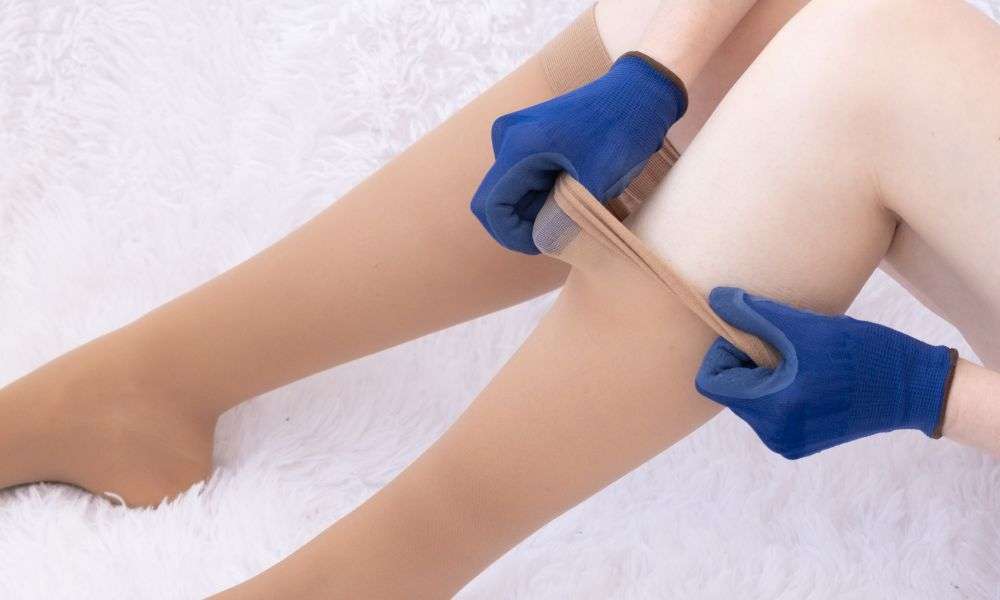How Fabric Choices Influence Breathability and Support
Choosing the right fabric for shapewear affects how comfortable and effective garments feel during daily wear. Fabric selection influences breathability, support level, elasticity, durability, and even how you care for and style the piece. This article explains practical fabric traits and how they relate to fit, measurement, and long-term performance to help you make informed choices.

The fabrics used in shapewear and related garments determine much of what you feel and how the piece performs. Breathability and support are often presented as opposing features: highly supportive fabrics can trap heat, while lightweight breathable materials may offer less control. Understanding how fiber type, knit structure, and elasticity combine helps you balance comfort, fit, and posture benefits without relying on promotional claims.
This article is for informational purposes only and should not be considered medical advice. Please consult a qualified healthcare professional for personalized guidance and treatment.
How fabric affects breathability and comfort
Fabric breathability depends on fiber properties and construction. Natural fibers like cotton and bamboo permit more airflow at the fiber level, while synthetics such as nylon and polyester can be engineered with micro-porous structures or mesh zones to improve ventilation. Knit and woven constructions also matter: open knits and perforated panels increase airflow, while tight compressive weaves reduce air exchange. For everyday comfort, garments that combine breathable panels in high-heat zones with firmer fabric elsewhere strike a balanced approach to temperature regulation and sustained comfort.
What fabric features provide support and posture benefits
Support comes from a fabric’s elasticity, recovery, and thickness. Elastane (spandex) blended with stronger fibers provides stretch and return, enabling garments to compress, shape, and assist posture support. Layered constructions—such as a firm core panel backed by softer lining—can distribute pressure and offer scapular or lumbar assistance without overly restricting movement. Effective support is measured by consistent compression across sizing ranges and fabrics that resist bagging or permanent deformation after repeated wear.
How elasticity, fit, and measurement influence performance
Proper fit and accurate measurement are essential for shapewear to perform as intended. Elasticity determines how the garment conforms to body contours; too little stretch causes pinching, while too much limits control. Use manufacturer sizing guidelines but verify with your own measurement: waist, hip, and torso length are common metrics. A well-fitting garment aligns compression zones with the body’s natural curves, improving posture and avoiding migration or rolling during wear. When in doubt, choose a size that matches your measurements rather than one based solely on numbered sizing.
Durability, care, and maintenance of different fabrics
Durability varies by fiber and construction. High-quality synthetic blends often resist abrasion and maintain elasticity longer than pure natural fibers, but they can be sensitive to heat and harsh detergents. Follow care labels: low-temperature washing, gentle cycles, and air drying extend the life of elastic fabrics. Heat from tumble dryers or hot irons can degrade elastane and reduce long-term support. Routine maintenance—such as rotating garments and avoiding prolonged compression when not in use—helps preserve shape and effectiveness.
Styling, practical use, and sustainability considerations
Styling choices influence how fabrics perform in daily outfits. Thinner, seamless fabrics work better under fitted clothing for a smooth silhouette, while thicker, structured materials may pair well with looser garments for targeted shaping. Sustainability is increasingly relevant: look for blends with recycled fibers, transparent manufacturing practices, and certifications for reduced environmental impact. Sustainable fabrics can offer comparable breathability and support when designed thoughtfully, though trade-offs in durability or care requirements may exist.
Balancing breathability, support, and real-world usage
When selecting shapewear, consider everyday activities and expected duration of wear. For active use, prioritize moisture-wicking, breathable panels and fabrics with fast recovery to maintain support during movement. For occasional or dress use, higher-compression materials with less emphasis on breathability may provide a smoother silhouette for short periods. Pay attention to how fabrics change with wear—elasticity loss, pilling, or reduced recovery indicate a need to replace the garment to retain intended support.
Conclusion Fabric choice is a practical decision that ties together breathability, support, comfort, and longevity. By focusing on fiber type, knit structure, elasticity, and appropriate care, you can select garments that match your fit and measurement needs while supporting posture and everyday comfort. Thoughtful selection also allows styling flexibility and consideration of sustainability impacts without compromising the garment’s functional goals.




